Home > Root growth > Ideal root system?
Ideal root system?
The ideal root system for planting in urban landscapes has not been identified, but researchers are working toward this end. Before we determine how to grow the ideal root system, we must determine what a good root system would look like. Here are some thoughts on the matter in a series of photographs below. Note that some large roots are oriented both laterally and downward on the better root systems; whereas most are oriented downward or around on the poor root systems. Higher quality root systems also have several large main roots emerging from just below the soil surface. Early testing shows that trees on the left with better root systems were better anchored to the soil after planting than those with a lesser quality (those on the right side).
| High quality root systems | Lower quality root systems |
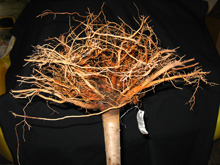 |
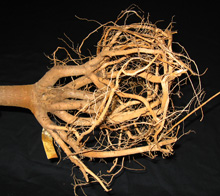 |
 |
 |
 |
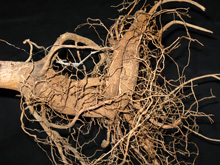 |
 |
 |
 |
 |
 |
 |
|
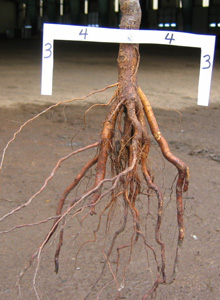 Photo courtesy Keith Warren Photo courtesy Keith Warren |
| Root systems can look like the root systems shown at right with most root tips deep in the soil, main roots growing downward, or twisted, to to one side. This root form may be poorly adapted to certain compacted soil types because of low soil oxygen levels down deep. Roots may have to redevelop a much shallower root system after planting in order to thrive in the landscape. We need more research on this. Some trees form a root system with both shallow roots and deep roots like the trees shown on the left. Trees with this root form may adapt quicker to soils typical of many urban landscapes since some main roots are close to the surface where oxygen is more prevalent. | |

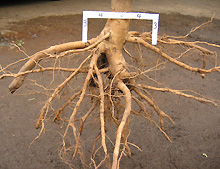 Photo courtesy Keith Warren
Photo courtesy Keith Warren